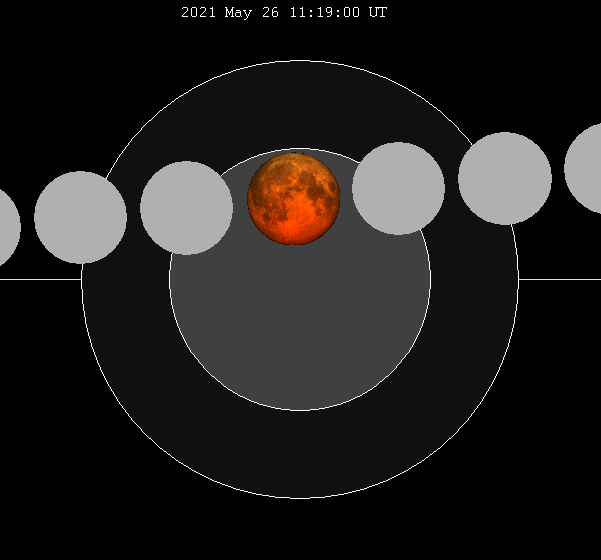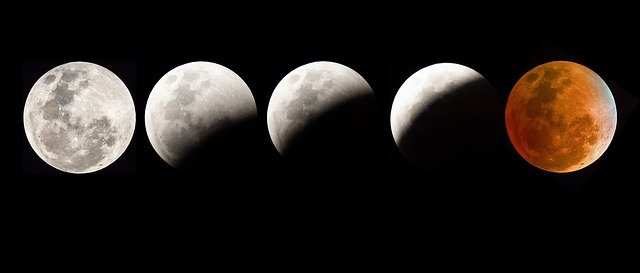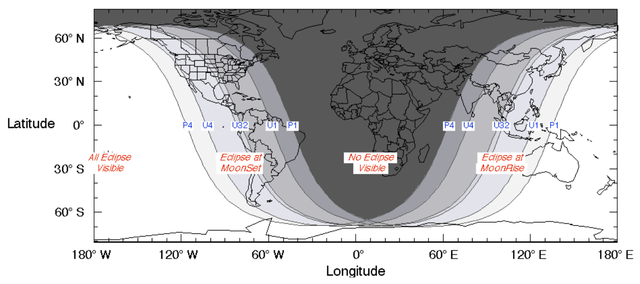Edit: in a previous version, times were off by one hour. They are now correct.
The eclipse will begin at 7:45pm Eastern Standard Time on Wednesday evening (May 26th) as the Moon first touches the shadow cast by the Earth in obscuring the Sun's light. This is referred to as the umbral stage.
In the image below, the centre grey section indicates the fully shadowed cone, whereas the darker ring indicates partial loss of the sun's light.

Image by w:User:SockPuppetForTomruen, CC0, via Wikimedia Commons
|
|
Totality will occur at 9:11pm and will last just under 15 minutes, finishing at 9:26pm. The Moon will finally exit the umbral shadow at 10:52pm. The shortness of the eclipse is due, as the diagram indicates, to the fact that the moon is not passing across the centre of the shadow. The other limiting factor is the distance away from earth the Moon is at the time - the further away, the narrower the shadow cone will be and the shorter the eclipse duration.
The penumbral stages of the eclipse occur before and after the main eclipse and are seen as a gradual dimming of the Moon's appearance, although this is generally difficult to discern. The moment the moon touches the umbra (the shadow cone), the edge of the Earth will be projected upon the face of the Moon, as may be seen in the stacked image below.

Image by Jean van der Meulen from Pixabay
Once the Moon is fully in the Earth's shadow, it will typically turn blood red (as the stacked image shows) as the only light reaching the moon will have passed through the Earth's atmosphere and will act like a sunrise or sunset colour. Due to such low levels of available light, not only will it be quite red, but very dim as well.
A full map of visibility (sourced from NASA) shows that North and South America will only see the early stages of the eclipse as the moon sets in the west, while most of Asia will observe the moon rising in the east already in some degree of eclipse but will observe the remainder of the event. It will be invisible across all of Europe and Africa. The best view is centred on the Pacific.

Forecasts from the Bureau of Meteorology suggest excellent viewing in Perth, Darwin, Brisbane and Sydney but conditions are much less favourable in the other capitals.










































